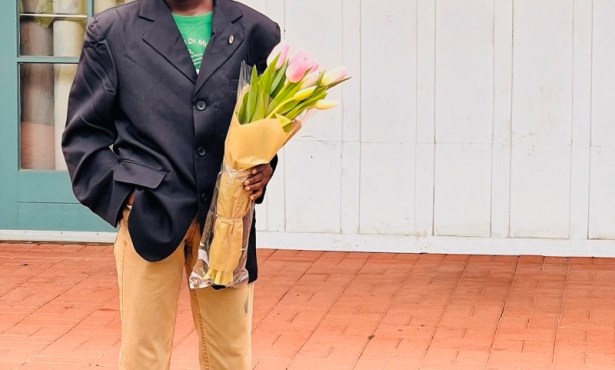‘25 April’
Director Leanne Pooley

There were many defining battles of World War I — the Battle of the Somme, for example, in which more than 50,000 French military personnel were killed or went missing. For our compatriots Down Under, the battle for Turkey’s Gallipoli peninsula is etched into their collective memory as one of the deadliest. In 25 April, director Leanne Pooley has made a beautifully rendered documentary that uses graphic novel-style animation to tell the true stories of six Australian and New Zealand Army Corps (ANZAC) soldiers who fought in the ill-fated Gallipoli campaign. (25 April screens Friday, February 5, 5:20pm at Metro; Saturday, February 6, 11:20am at Metro; and Monday, February 8, 11am at Lobero.)
What drew you to make this film?
I was approached by the producer Matthew Metcalfe who had the idea to make a film about Gallipoli using animation. Gallipoli is a very important part of New Zealand’s national identity, but it’s a story that’s been told a number of times. This was a new and exciting way to explore what happened. Animation means I can do things I couldn’t if this was a live action film. I can really get inside the heads of those who were there. There are visual metaphors that help me express the emotional cost as well as the physical cost of this conflict that simply wouldn’t work in a live action film. It really was a creative opportunity I couldn’t pass up.
How did you select the six people whose lives the film followed?
The research stage took almost a year. We read hundreds of diaries looking for individuals who could help me cross the entire eight-month campaign and who wrote not just of what happened but of what they felt about what was happening. It was a sobering and difficult task but I felt really humbled by the words of the young men and women who were living through a nightmare. By the time we “cast” the six we felt best articulated the circumstances I really felt I’d got to know them.
Why did you decide to use graphic-novel style animation to tell the story?
This is a grown up story and I didn’t want it to feel “cartoonish.” I wanted it to have a beautiful yet gritty feel and I believed the graphic novel approach would help us achieve this. Colin Wilson, a renowned graphic artist, was brought on to help us design the look. I believe what he and the animators at FLUX animation have achieved is truly amazing and gives the film power a more traditional style of animation might not have.
The film is beautifully animated and the emotional nuances that show in faces of the people “interviewed” nearly made me forget it was animation. Did you use motion-capturing imaging to attaint such subtlety?
Yes, the “interviews” were done using motion capture. I felt strongly that if the audience didn’t connect with these individuals as real people the film wouldn’t work so we had a cast of wonderful New Zealand actors inhabiting those animated bodies. The actors read the diaries, letters, and memoirs of the people they played. They really got inside the characters and brought another layer of honesty to the film.
I presume most people in New Zealand and Australia are familiar with the Gallipoli campaign. Did you make this film with those audiences in mind or was your intention to acquaint international viewers with the battle?
Both really. While the story is known to our audience at home I’m hoping that in choosing to animate it we’ve given it a new life. We have been able to bring the men and woman who were there a chance to really talk about their experiences in an intimate and sometimes confronting way. I’m hoping this, alongside the power of the story itself, will engage those who felt they’d heard and seen everything Gallipoli had to offer. At the same time I believe that same power and the innovative way we’ve chosen to explore it will connect with an international audience. That there will be interested in a “documentary” that goes outside the traditional envelope. I also believe that because the film taps into universal themes around war and sacrifice that it should touch anyone who has thought about conflict and its impact on humanity.
What do you hope audiences take away from this film?
I’m hoping the audience really identifies with these young men and woman who 100 years ago experienced unimaginable horror but managed to cling to their humanity. While reading the diaries I found these people from a different time very familiar, it felt as if they were talking to me down the pub. Not much has changed in 100 years. Young men and women go to war at the behest of others and make huge sacrifices. I hope that the reality of war, imagined in this unreal way, encourages the audience to consider the price paid by those who are there and how it’s still being exacted.



